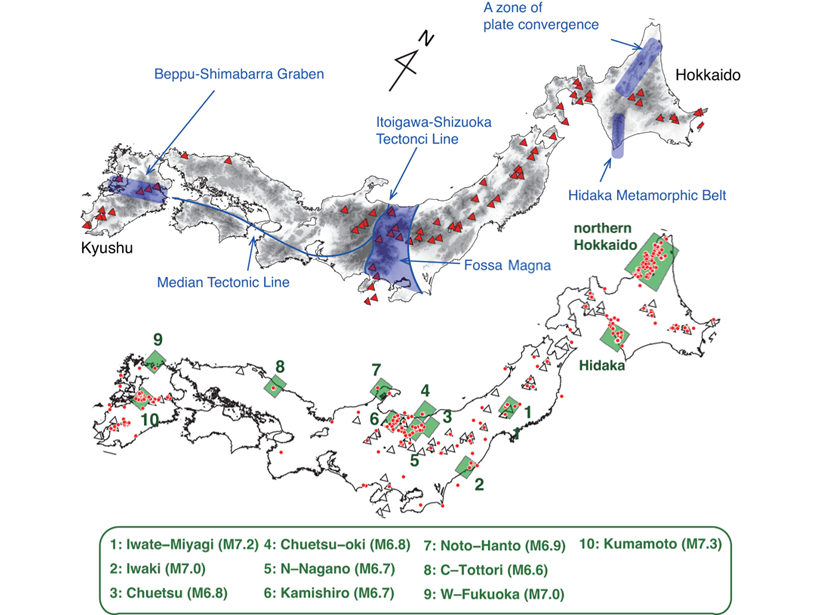Source: Journal of Geophysical Research: Solid Earth
Earthquakes can be large or small, and energetic or enervated. The vivacity of earthquakes has been measured using stress drop or scaled energy, and some earthquakes have very small stress drop with low energy. Nevertheless, little has been known for such enervated earthquakes. Using a high-quality earthquake catalog in Japan, Nakajima and Hasegawa [2021] detected many shallow (<15 km) and small (M<2.5) earthquakes of such enervated type, which they named “relative low frequency earthquake” (r-LFE). The authors found that r-LFEs occurred more frequently than previously thought, and some of them radiated very low energy, which is comparable to volcanic LFEs. They tend to occur around some tectonic boundary and after major earthquakes. These are important findings for understanding earthquake genesis and tectonic deformation.
Citation: Nakajima, J., & Hasegawa, A. [2021]. Prevalence of shallow low‐frequency earthquakes in the continental crust. Journal of Geophysical Research: Solid Earth, 126, e2020JB021391. https://doi.org/10.1029/2020JB021391
—Satoshi Ide, Associate Editor, JGR: Solid Earth
Text © 2021. The authors. CC BY-NC-ND 3.0
Except where otherwise noted, images are subject to copyright. Any reuse without express permission from the copyright owner is prohibited.

